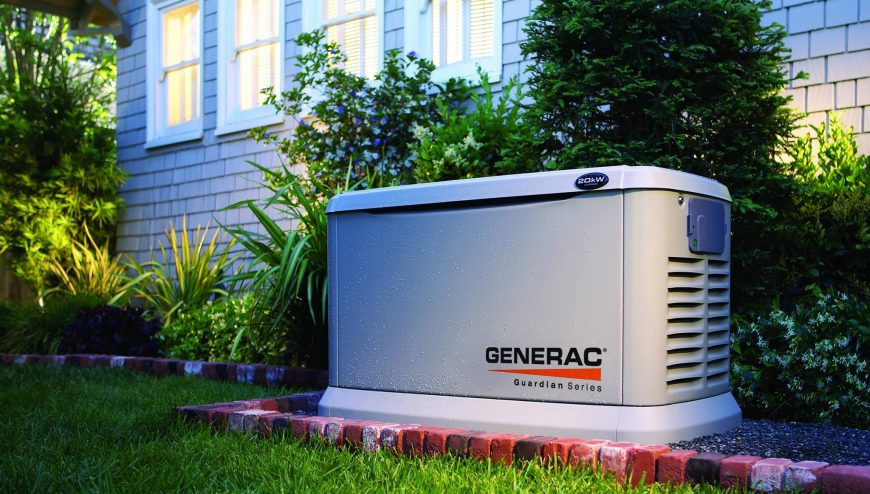How to Prepare Your Warner Robins Home for a Home Generator Installation
Home generators are a valuable investment for homeowners in Warner Robins, especially during unexpected power outages. A properly installed generator ensures your home remains powered when the grid goes down. If you're considering a home generator installation, here’s how to prepare your home, from assessing your power needs to the final installation.
Assessing Your Power Needs
The first step in preparing for a home generator installation is determining how much power your home requires during an outage. You’ll need to decide which appliances and systems are essential and should remain operational when the power goes out. Here’s how to assess your needs:
Identify Essential Appliances: Make a list of the most important appliances and systems, such as the refrigerator, HVAC, lights, sump pump, or medical equipment, that you’ll want to keep running during an outage.
Calculate Total Wattage: Each appliance has a wattage requirement, which is often listed on its label. Add up the wattage for all essential appliances to estimate the total power your generator will need to supply.
Consult with an Electrician: To get an accurate assessment of your home’s power needs, consult a professional electrician. They can help you identify which circuits should be connected to the generator and offer suggestions based on your household’s specific requirements.
Choosing the Right Generator
Once you know how much power your home requires, you can select the right generator to meet those needs. Generators come in a variety of sizes, and it’s important to choose one that can handle your load.
Portable vs. Standby Generators: Portable generators are typically smaller and require manual operation. Standby generators are permanently installed and automatically power your home when an outage occurs. For homeowners seeking convenience and reliability, standby generators are the better option.
Fuel Type: Generators can be powered by propane, natural gas, or diesel. The fuel type you choose depends on availability and your personal preferences. Natural gas is commonly used due to its consistent availability, but propane or diesel may be suitable options depending on your location.
Size of the Generator: Your generator should be able to handle the total wattage of the appliances and systems you identified in the first step. For whole-house coverage, a larger generator will be required, while smaller units may only power a few critical systems.
Pre-Installation Preparations
Preparing your home for the generator installation involves several important steps to ensure a smooth installation process:
Select the Installation Location: Generators are usually installed outside your home, near the electrical panel. The location should be clear of obstructions and comply with local building codes, especially regarding clearance from windows and doors.
Permits and Approvals: Depending on your local regulations, you may need to obtain permits or approval before installing a generator. Your electrician or installer will handle the paperwork, but it’s important to confirm these details ahead of time.
Fuel Source Installation: If you’re installing a generator that runs on natural gas, a connection to your home’s gas line will be required. For propane or diesel units, make sure the fuel tank is in place and easily accessible.
Clear the Installation Area: Ensure that the installation site is prepared. Clear the area of debris, and make sure there’s adequate space for the generator, especially if a concrete pad or base needs to be installed.
Heritage Electrical Services' Seamless Installation Process
At Heritage Electrical Services, we aim to make the installation process as smooth as possible for Warner Robins homeowners. Our team of licensed electricians follows a seamless installation process to ensure your generator is installed safely and efficiently.
Consultation and Assessment: We start by assessing your home’s power needs and recommending the right generator for your situation. We take care of all the details, from sizing the generator to determining which circuits should be connected.
Permits and Compliance: We handle all the necessary permits and make sure the installation complies with local building codes and safety regulations.
Installation of Transfer Switch: A key part of the installation is the transfer switch, which automatically switches your home’s power source to the generator during an outage. We install the switch and ensure everything is wired correctly.
Fuel Connection and Testing: Whether your generator is powered by natural gas, propane, or diesel, we ensure all connections are properly made. Once the installation is complete, we test the system thoroughly to confirm it’s ready for operation.
Ongoing Support: After installation, we offer maintenance services to keep your generator running smoothly. We’re always available for any questions or future servicing needs.
Conclusion
Installing a home generator in your Warner Robins home is a smart investment for protecting your family and property during power outages. By assessing your power needs, choosing the right generator, and working with a professional electrician, you can ensure a seamless installation process. Heritage Electrical Services is here to guide you every step of the way, from selecting the perfect generator to providing expert installation and ongoing support. Contact us today to learn more!

